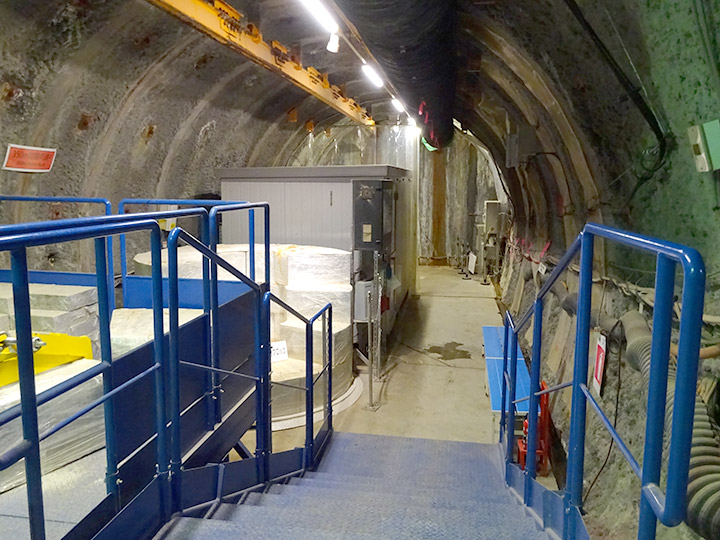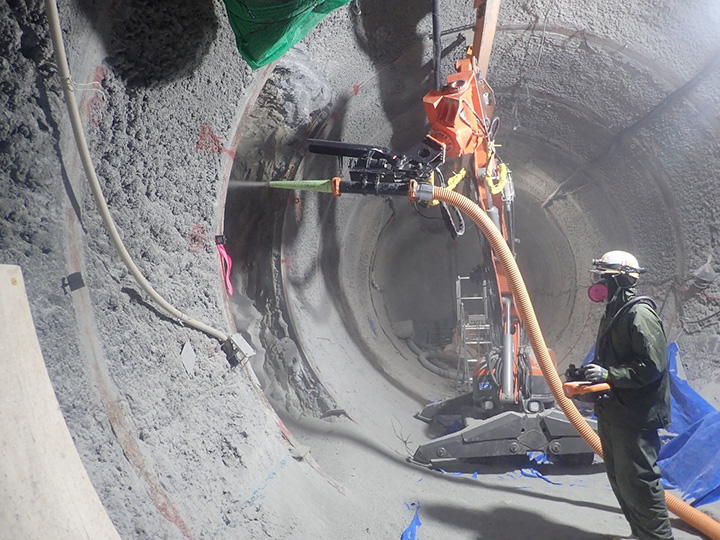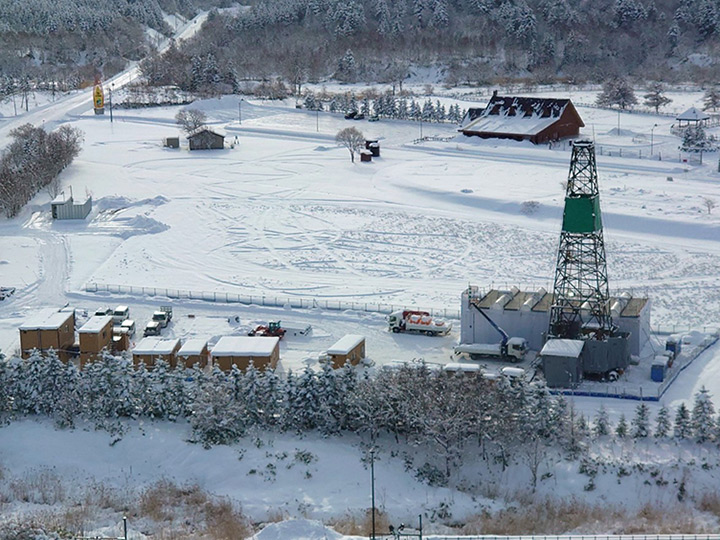Current R&D Tasks
We currently focus on the three tasks that were identified as 'key research and development (R&D) challenges to be tackled' in the 'Horonobe Underground Research Plan for the Financial Year 2020 Onwards', which are:
- Study on near-field system performance in geological environment;
- Demonstration of repository design options; and
- Understanding of buffering behaviour of sedimentary rocks to natural perturbations.
Study on near-field system performance in geological environment
This task is aimed at advancing techniques for evaluating the key processes of relevance to the long-term near-field system performance. Particular concern focusses on the coupled thermal-hydrological-mechanical-chemical (T-H-M-C) behaviour of the engineered barrier system (EBS) and the solute transport process in the EBS and its near-field. To these ends, the subtask (i) "full-scale EBS performance experiment" launched in 2014 is continued and then expanded with the dismantlement of the entire experimental setup and the subtask (ii) "solute transport experiment with model testing" is extensively carried out.
*View the location of the 350 m Niche No.4 in the Locations & Facilities page.

Demonstration of repository design options
In situ demonstration experiments show the engineering feasibility of a range of technical options that would allow flexibility in designing a repository for a variety of geological environments. Relevant concepts / criteria, methodologies and techniques are established in two subtasks: (i) the "demonstration of engineering feasibility of repository technology" addressing the 'development and testing of operation, retrieval and closure technologies' and the 'systematic integration of technologies towards EBS emplacement' and (ii) the "evaluation of EBS behaviour over 100°C".
*View the location of the 350 m Niche No.2 in the Locations & Facilities page.

Understanding of buffering behaviour of sedimentary rocks to natural perturbations
This task is dedicated to gain a better understanding of the hydro-mechanical buffering behaviour of sedimentary rocks against natural perturbations such as fault reactivation and uplifting. In situ experiment and field investigation programmes involve two subtasks: (i) the "evaluation of intrinsic buffering against endogenic and exogenic processes" focussing on the 'evaluation of hydro-mechanical responses of fault to water pressure changes' and the 'improvement of techniques for characterising groundwater stagnant domain' and (ii) the "development of techniques for evaluating excavation damaged zone (EDZ) self-sealing behaviour after backfilling".

The results of the R&D project are integrated with those obtained in other departments of JAEA, which would allow the scientific and technological basis for the geological disposal project and the associated safety regulations to be reinforced. We will steadily proceed with this project in collaboration with relevant organisations and universities both domestically and internationally and also widely publish the plans and results of the project to ensure their transparency and technical reliability.
